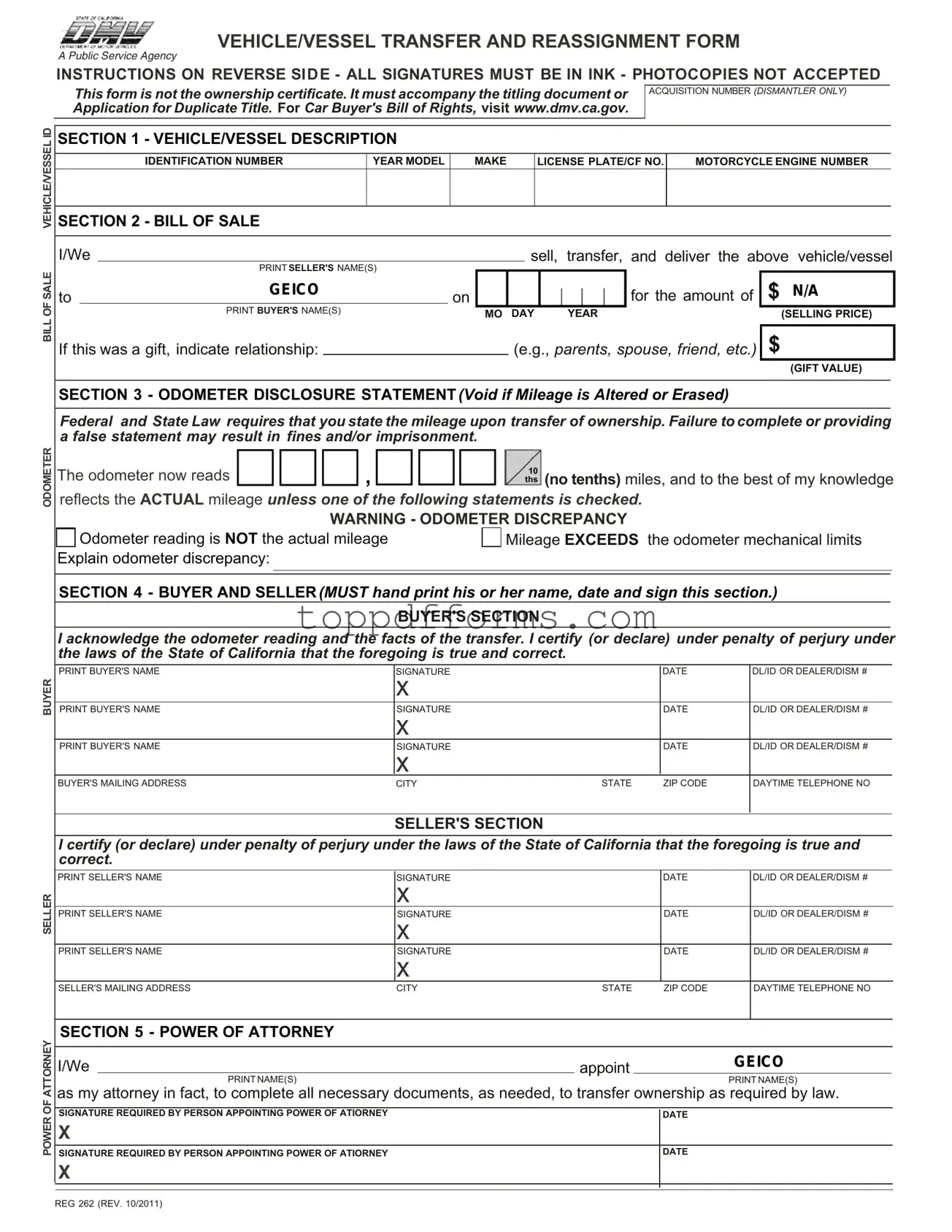What is the California Form REG 262?
The California Form REG 262, also known as the Vehicle/Vessel Transfer and Reassignment Form, is a document used for transferring ownership of a vehicle or vessel in California. It is essential for the buyer and seller to complete this form accurately to ensure a smooth transfer process. This form must accompany the title or an application for a duplicate title and is not an ownership certificate by itself.
Who needs to fill out the REG 262 form?
Both the seller and the buyer of the vehicle or vessel must fill out the REG 262 form. The seller provides information about the sale, including the bill of sale, while the buyer acknowledges the transfer and confirms the odometer reading. If the vehicle is a gift, the seller must also indicate the relationship to the recipient.
What information is required on the REG 262 form?
The REG 262 form requires several key pieces of information. This includes the vehicle or vessel identification number, year, make, model, license plate number, and odometer reading. Additionally, the seller must provide their name and address, and the buyer must do the same. Both parties must sign and date the form to validate the transaction.
What is the purpose of the odometer disclosure section?
The odometer disclosure section is crucial for preventing fraud related to vehicle mileage. Federal and state laws require the seller to disclose the vehicle's mileage at the time of sale. If the odometer reading is altered or erased, the disclosure becomes void, and a new statement must be completed. This section helps protect buyers from potential misrepresentation regarding the vehicle's condition.
Can the REG 262 form be photocopied?
While the original REG 262 form must be submitted, photocopies can be retained for personal records. However, the form itself should not be photocopied and submitted, as only the original is accepted for the transfer process.
What happens if the REG 262 form is not completed correctly?
If the REG 262 form is not completed correctly, it may lead to delays in the transfer process or even rejection of the application for title transfer. Incomplete or inaccurate information can result in legal complications for both the buyer and seller. Therefore, it is essential to double-check all entries before submission.
Is a power of attorney needed when using the REG 262 form?
A power of attorney is not mandatory when using the REG 262 form, but it can be appointed if one party wishes to authorize another individual to act on their behalf in completing the necessary documents for the transfer. This section must be filled out separately and cannot be used for the odometer disclosure.
Where can I find more information about my rights when buying a vehicle?
For more information about your rights as a buyer, you can visit the California Department of Motor Vehicles (DMV) website. They provide resources such as the Car Buyer’s Bill of Rights and other informative brochures to help you understand your rights and responsibilities when purchasing a vehicle.
